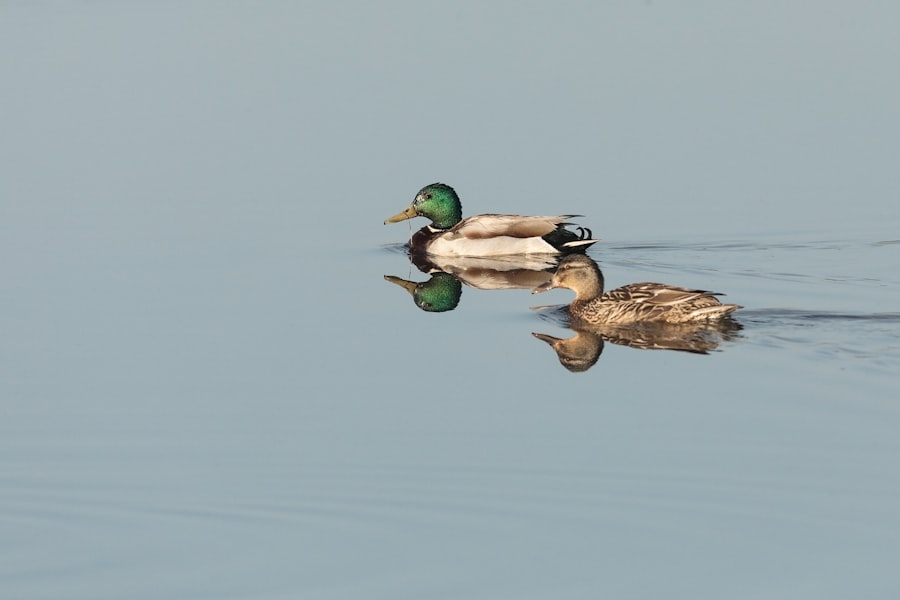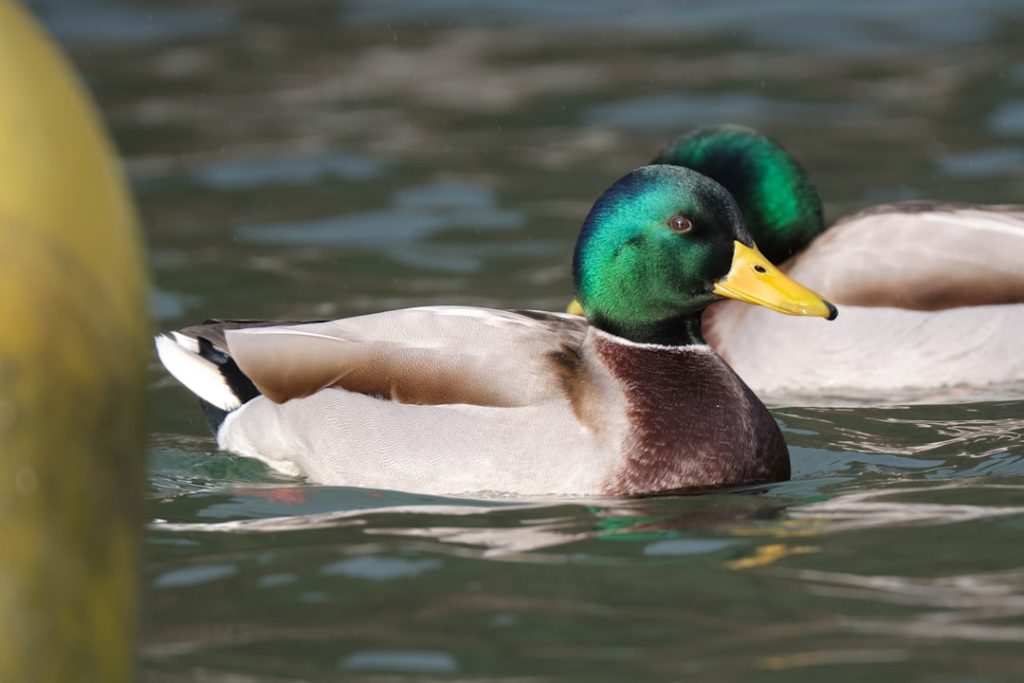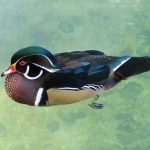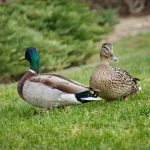Ducks are fascinating and diverse creatures, with a wide range of breeds that come in all shapes, sizes, and colors. One of the most striking and iconic features of some duck breeds is their beautiful green heads. This unique trait sets these breeds apart and adds to their allure and beauty. In this article, we will explore several different duck breeds with green heads, delving into their characteristics, history, and unique qualities. From the classic Mallard to the lesser-known East Indie, each of these breeds has its own story to tell and its own special charm. Whether you are a duck enthusiast, a farmer, or simply someone who appreciates the beauty of nature, learning about these green-headed duck breeds is sure to be an enriching and enjoyable experience.
Table of Contents
- 1 The Mallard: A Classic Green-Headed Duck Breed
- 2 The Cayuga: A Unique Green-Headed Duck Breed
- 3 The East Indie: A Lesser-Known Green-Headed Duck Breed
- 4 The Swedish Blue: A Stunning Green-Headed Duck Breed
- 5 The Rouen: A Domestic Green-Headed Duck Breed
- 6 The Beauty and Diversity of Green-Headed Duck Breeds
- 7 FAQs
Key Takeaways
- Green-headed duck breeds are known for their unique and stunning appearance, making them popular among duck enthusiasts.
- The Mallard is a classic green-headed duck breed, known for its vibrant green head and distinctive quacking sound.
- The Cayuga is a unique green-headed duck breed, with its iridescent green-black plumage and friendly disposition.
- The East Indie is a lesser-known green-headed duck breed, prized for its striking appearance and calm demeanor.
- The Swedish Blue is a stunning green-headed duck breed, with its beautiful blue plumage and gentle nature.
- The Rouen is a domestic green-headed duck breed, valued for its large size and calm temperament, making it a popular choice for backyard ponds.
- Green-headed duck breeds offer a diverse range of colors, sizes, and temperaments, adding beauty and variety to any flock.
The Mallard: A Classic Green-Headed Duck Breed
The Mallard is perhaps the most well-known and iconic green-headed duck breed. With its vibrant emerald green head, striking white neck ring, and mottled brown plumage, the Mallard is a familiar sight in ponds, lakes, and wetlands around the world. This breed is native to North America, Europe, and Asia and is known for its adaptability and hardiness. Mallards are highly migratory birds and can be found in a wide range of habitats, from urban parks to remote wilderness areas. In addition to their stunning appearance, Mallards are also prized for their delicious meat and are a popular choice for hunters and farmers alike. They are also a favorite subject for wildlife photographers and artists, who are drawn to their elegant form and vibrant colors. Whether you encounter them in the wild or on a farm, Mallards never fail to captivate with their beauty and grace.
The Mallard has a long and storied history, with references to this breed dating back thousands of years. In many cultures, the Mallard holds symbolic significance and is associated with various myths, legends, and folklore. For example, in ancient Greek mythology, the Mallard was linked to the goddess Aphrodite and was considered a symbol of love and fertility. In Chinese culture, the Mallard is associated with happiness and fidelity and is often depicted in traditional art and literature. Throughout history, the Mallard has been celebrated for its beauty and admired for its adaptability and resilience. Today, this iconic green-headed duck breed continues to enchant and inspire people around the world, serving as a reminder of the enduring connection between humans and the natural world.
The Cayuga: A Unique Green-Headed Duck Breed
The Cayuga is a distinctive green-headed duck breed that hails from the United States. Named after Cayuga Lake in New York, where it was first developed in the mid-19th century, this breed is known for its striking iridescent green-black plumage that shimmers in the light. The Cayuga’s feathers have a unique quality that sets it apart from other green-headed duck breeds, making it a favorite among duck enthusiasts and breeders. In addition to its stunning appearance, the Cayuga is also valued for its calm and friendly temperament, making it a popular choice for backyard ponds and small farms. This breed is known for its excellent foraging abilities and is prized for its ability to control pests and weeds in agricultural settings. With its combination of beauty, utility, and gentle disposition, the Cayuga has earned a devoted following among duck fanciers and homesteaders.
The history of the Cayuga breed is closely tied to the development of American agriculture in the 19th century. Originally bred for its meat and eggs, the Cayuga quickly gained popularity for its distinctive appearance and soon became a sought-after breed for exhibition and ornamental purposes. Over time, breeders have worked to refine the Cayuga’s coloration and conformation, resulting in the stunning birds that we see today. Despite facing challenges such as declining numbers and loss of genetic diversity, dedicated breeders have worked tirelessly to preserve and promote the Cayuga breed, ensuring that future generations will have the opportunity to appreciate its unique beauty and valuable traits. As a symbol of American agricultural heritage and ingenuity, the Cayuga continues to hold a special place in the hearts of duck enthusiasts and conservationists alike.
The East Indie: A Lesser-Known Green-Headed Duck Breed
The East Indie is a lesser-known green-headed duck breed that originated in Southeast Asia. This breed is known for its striking iridescent green-black plumage that gives it a mysterious and captivating appearance. The East Indie’s unique coloration sets it apart from other duck breeds and makes it a favorite among collectors and enthusiasts. In addition to its stunning appearance, the East Indie is also valued for its calm and friendly temperament, making it a popular choice for small farms and homesteads. This breed is known for its excellent foraging abilities and is prized for its ability to control pests and weeds in agricultural settings. With its combination of beauty, utility, and gentle disposition, the East Indie has earned a devoted following among duck fanciers and conservationists.
The history of the East Indie breed is shrouded in mystery, with little documentation about its origins and development. It is believed that this breed was first brought to Europe from Asia in the 19th century and quickly gained popularity for its unique appearance. Over time, breeders have worked to refine the East Indie’s coloration and conformation, resulting in the stunning birds that we see today. Despite facing challenges such as declining numbers and loss of genetic diversity, dedicated breeders have worked tirelessly to preserve and promote the East Indie breed, ensuring that future generations will have the opportunity to appreciate its unique beauty and valuable traits. As a symbol of cultural exchange and appreciation for exotic wildlife, the East Indie continues to hold a special place in the hearts of duck enthusiasts and conservationists around the world.
The Swedish Blue: A Stunning Green-Headed Duck Breed
The Swedish Blue is a stunning green-headed duck breed that hails from Sweden. This breed is known for its striking slate blue plumage with subtle hints of green on its head, giving it a unique and captivating appearance. The Swedish Blue’s elegant coloration sets it apart from other duck breeds and makes it a favorite among collectors and enthusiasts. In addition to its stunning appearance, the Swedish Blue is also valued for its calm and friendly temperament, making it a popular choice for small farms and homesteads. This breed is known for its excellent foraging abilities and is prized for its ability to control pests and weeds in agricultural settings. With its combination of beauty, utility, and gentle disposition, the Swedish Blue has earned a devoted following among duck fanciers and conservationists.
The history of the Swedish Blue breed dates back to the 19th century when it was developed in Sweden through selective breeding for its unique coloration. Over time, breeders have worked to refine the Swedish Blue’s coloration and conformation, resulting in the stunning birds that we see today. Despite facing challenges such as declining numbers and loss of genetic diversity, dedicated breeders have worked tirelessly to preserve and promote the Swedish Blue breed, ensuring that future generations will have the opportunity to appreciate its unique beauty and valuable traits. As a symbol of Scandinavian heritage and appreciation for natural beauty, the Swedish Blue continues to hold a special place in the hearts of duck enthusiasts and conservationists around the world.
The Rouen: A Domestic Green-Headed Duck Breed

The Rouen is a domestic green-headed duck breed that originated in France. This breed is known for its large size, deep chestnut plumage with iridescent green highlights on its head, making it a striking and impressive bird. The Rouen’s regal appearance sets it apart from other duck breeds and makes it a favorite among collectors and enthusiasts. In addition to its stunning appearance, the Rouen is also valued for its calm temperament and excellent meat production, making it a popular choice for small farms and homesteads. This breed is known for its gentle disposition and adaptability to various environments, making it an ideal choice for those looking to raise ducks for meat or ornamental purposes.
The history of the Rouen breed dates back to medieval France when it was developed through selective breeding from wild Mallards for its large size and delicious meat. Over time, breeders have worked to refine the Rouen’s coloration and conformation, resulting in the stunning birds that we see today. Despite facing challenges such as declining numbers and loss of genetic diversity, dedicated breeders have worked tirelessly to preserve and promote the Rouen breed, ensuring that future generations will have the opportunity to appreciate its unique beauty and valuable traits. As a symbol of French culinary tradition and appreciation for domesticated wildlife, the Rouen continues to hold a special place in the hearts of duck enthusiasts and conservationists around the world.
The Beauty and Diversity of Green-Headed Duck Breeds
In conclusion, green-headed duck breeds are truly remarkable creatures that captivate with their stunning beauty, unique traits, and rich history. From the classic Mallard to the lesser-known East Indie, each of these breeds has its own story to tell and its own special charm. Whether you are drawn to their vibrant plumage, gentle temperament, or valuable utility on farms, there is no denying the allure of these green-headed ducks. As we continue to appreciate and celebrate these remarkable breeds, it is important to remember the efforts of dedicated breeders who work tirelessly to preserve their genetic diversity and ensure their continued existence for future generations to enjoy. Whether you are an experienced duck enthusiast or simply someone who appreciates the beauty of nature, learning about these green-headed duck breeds is sure to be an enriching experience that deepens your connection to these fascinating creatures.
If you’re fascinated by duck breeds with green heads, you’ll love our article on “The Fascinating World of Poultry Breeds” at PoultryWizard.com. This comprehensive guide explores the unique characteristics and traits of various poultry breeds, including ducks with striking green heads. Whether you’re a novice or experienced poultry enthusiast, this article is a must-read for anyone interested in learning more about different poultry breeds and their distinctive features.
FAQs
What are some duck breeds with green heads?
Some duck breeds with green heads include the Mallard, the Rouen, the Cayuga, and the Swedish Blue.
Why do some duck breeds have green heads?
The green coloration on the heads of certain duck breeds is due to the presence of a specific pigment called biliverdin, which is deposited in the feathers during molting.
Are all ducks with green heads male?
No, not all ducks with green heads are male. In fact, both male and female ducks of certain breeds, such as the Mallard, can have green heads.
Do all duck breeds with green heads look the same?
No, while many duck breeds have green heads, they can vary in size, shape, and overall appearance. Each breed has its own unique characteristics.
Can the green coloration on a duck’s head change?
Yes, the green coloration on a duck’s head can change depending on factors such as diet, health, and genetics. The intensity of the green color may vary.
Meet Walter, the feathered-friend fanatic of Florida! Nestled in the sunshine state, Walter struts through life with his feathered companions, clucking his way to happiness. With a coop that’s fancier than a five-star hotel, he’s the Don Juan of the chicken world. When he’s not teaching his hens to do the cha-cha, you’ll find him in a heated debate with his prized rooster, Sir Clucks-a-Lot. Walter’s poultry passion is no yolk; he’s the sunny-side-up guy you never knew you needed in your flock of friends!







